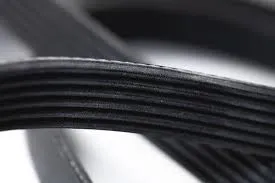- Arabic
- French
- Russian
- Spanish
- Portuguese
- Turkish
- Armenian
- English
- Albanian
- Amharic
- Azerbaijani
- Basque
- Belarusian
- Bengali
- Bosnian
- Bulgarian
- Catalan
- Cebuano
- Corsican
- Croatian
- Czech
- Danish
- Dutch
- Afrikaans
- Esperanto
- Estonian
- Finnish
- Frisian
- Galician
- Georgian
- German
- Greek
- Gujarati
- Haitian Creole
- hausa
- hawaiian
- Hebrew
- Hindi
- Miao
- Hungarian
- Icelandic
- igbo
- Indonesian
- irish
- Italian
- Japanese
- Javanese
- Kannada
- kazakh
- Khmer
- Rwandese
- Korean
- Kurdish
- Kyrgyz
- Lao
- Latin
- Latvian
- Lithuanian
- Luxembourgish
- Macedonian
- Malgashi
- Malay
- Malayalam
- Maltese
- Maori
- Marathi
- Mongolian
- Myanmar
- Nepali
- Norwegian
- Norwegian
- Occitan
- Pashto
- Persian
- Polish
- Punjabi
- Romanian
- Samoan
- Scottish Gaelic
- Serbian
- Sesotho
- Shona
- Sindhi
- Sinhala
- Slovak
- Slovenian
- Somali
- Sundanese
- Swahili
- Swedish
- Tagalog
- Tajik
- Tamil
- Tatar
- Telugu
- Thai
- Turkmen
- Ukrainian
- Urdu
- Uighur
- Uzbek
- Vietnamese
- Welsh
- Bantu
- Yiddish
- Yoruba
- Zulu
Aug . 19, 2024 02:22 Back to list
Understanding the Advantages and Applications of Synchroflex Belt Technology in Modern Industries
The Importance of Synchroflex Belts in Modern Engineering
In the landscape of modern engineering and manufacturing, the components that we often overlook play a crucial role in the functionality and efficiency of machinery. One such component is the Synchroflex belt. This type of belt is increasingly becoming a preferred choice for power transmission in various applications due to its distinctive features and advantages.
What is a Synchroflex Belt?
Synchroflex belts, also known as synchronous or timing belts, are designed to provide precise movement and synchronous operation between connected components. Unlike traditional V-belts, which rely on friction to transmit power, Synchroflex belts are constructed with teeth that fit into corresponding grooves on the pulleys. This interlocking design ensures that there is no slippage, allowing for precise timing and movement between the drive and the driven components.
Advantages of Synchroflex Belts
1. High Efficiency Synchroflex belts enable highly efficient power transmission, minimizing energy loss that occurs in other belt types. Their unique design allows for optimal engagement with pulleys, thereby improving overall system efficiency.
2. Durability Made from quality materials such as neoprene or polyurethane, Synchroflex belts exhibit excellent durability and resistance to wear and tear. They can withstand harsh conditions, including extreme temperatures and exposure to oils and chemicals, making them suitable for a variety of industrial applications.
3. Noise Reduction Operating mechanisms that employ Synchroflex belts tend to run quieter than those using traditional belts. The reduced noise level is not just a matter of comfort; it also minimizes sound pollution in environments where precision and concentration are paramount.
synchroflex belt

4. Maintenance-Free One of the most appealing features of Synchroflex belts is their low maintenance requirement. Unlike chains, which need lubrication and regular adjustments, Synchroflex belts run smoothly without such concerns, leading to less downtime and reduced maintenance costs.
5. Application Versatility These belts are incredibly versatile and find applications across various sectors. From automotive engines to industrial machinery and robotics, Synchroflex belts are employed to ensure reliable power transmission in environments ranging from manufacturing plants to precision-driven devices.
Applications in Various Industries
Synchroflex belts are widely used across multiple sectors. In the automotive industry, they are typically found in timing systems where precise control of engine components is crucial for performance. In manufacturing, they power conveyor belts and automated systems, ensuring materials move efficiently through production lines.
The growing demand for automation and robotics has also paved the way for the adoption of Synchroflex belts. As machines become more sophisticated, the need for reliable, high-precision components that can handle increasing loads and speeds has never been greater.
Conclusion
In conclusion, the Synchroflex belt plays an essential role in modern engineering applications, offering distinct advantages in efficiency, durability, and precision. As industries continue to evolve, the demand for reliable power transmission solutions will drive the application of these belts further. Their versatility and effectiveness ensure that they will remain an integral part of mechanical design and engineering for years to come. With advancements in materials and technology, the future for Synchroflex and synchronous belts looks promising, paving the way for innovations in diverse fields.
-
High-Quality Tensioner Belt Pulley - Durable & Efficient
NewsAug.03,2025
-
Premium Timing Belt Factory | AI-Optimized Solutions
NewsAug.02,2025
-
Premium Custom V Belts Enhanced with GPT-4 Turbo AI
NewsAug.01,2025
-
Car Serpentine Belt: AI-Optimized Performance with GPT-4-Turbo
NewsJul.31,2025
-
Heat Joining Drive Belt | High-Durability Fusion Solution
NewsJul.31,2025
-
Timing Belt Video Guide: Selection, Design & Quality Insights
NewsJul.30,2025

